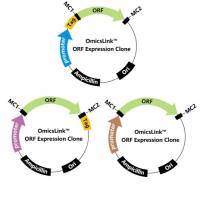Gene Identification Using the Pufferfish, Fugu rubripes, by Sequence Scanning
互联网
互联网
相关产品推荐

SARS-CoV-2 (2019-nCoV) Spike Gene ORF cDNA clone expression plasmid (Codon Optimized)
¥4690

disA/disA蛋白/Cyclic di-AMP synthase (c-di-AMP synthase) (Diadenylate cyclase)蛋白/Recombinant Mycobacterium paratuberculosis DNA integrity scanning protein DisA (disA)重组蛋白
¥69

KLHL10 Homo sapiens cDNA FLJ32662 fis, clone TESTI1000064, weakly similar to Fugu rubripes sex comb on midleg-like 2 protein (SCML2) gene.
询价

MCT1/Malignant T cell amplified sequence 1 Rabbit pAb(bs-1569R)-50ul/100ul/200ul
¥1180

Human CBLL1 Gene ORF cDNA clone expression plasmid
¥1770
相关问答

